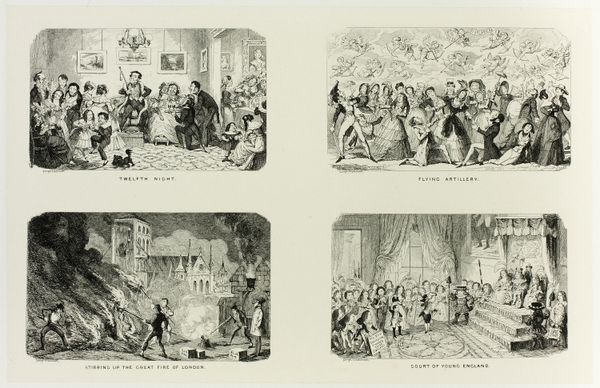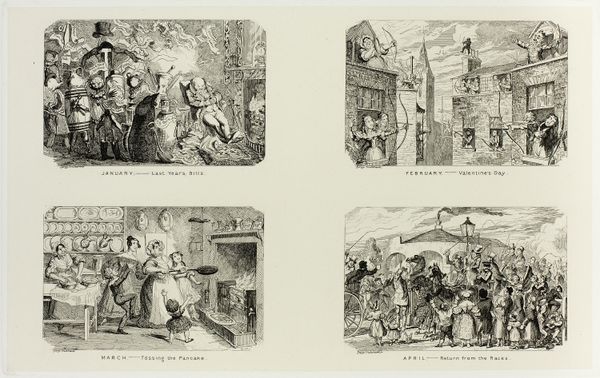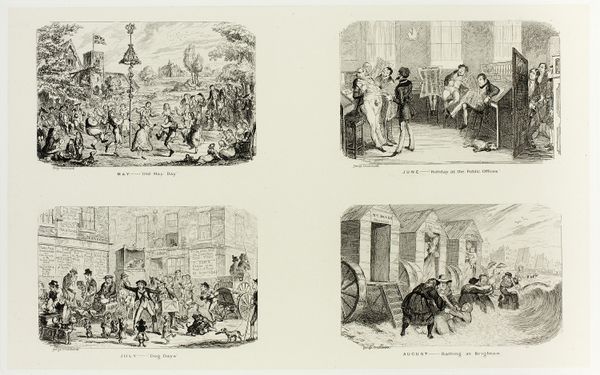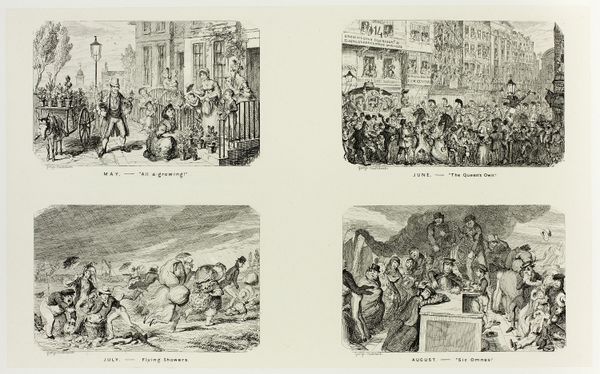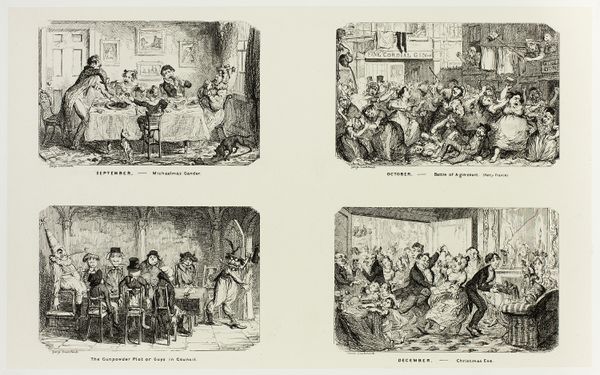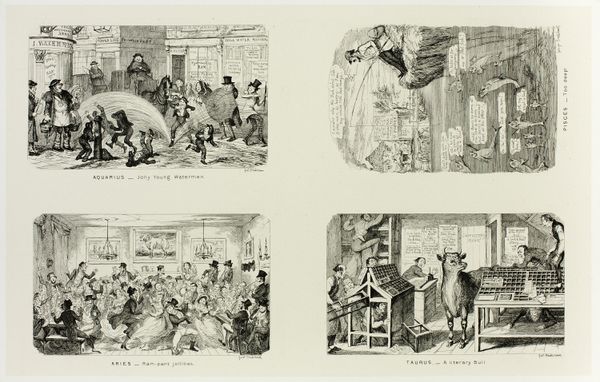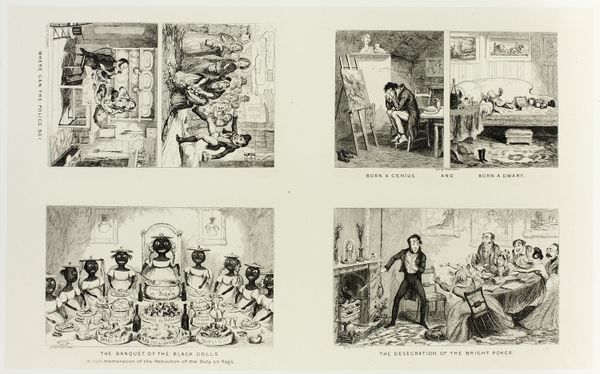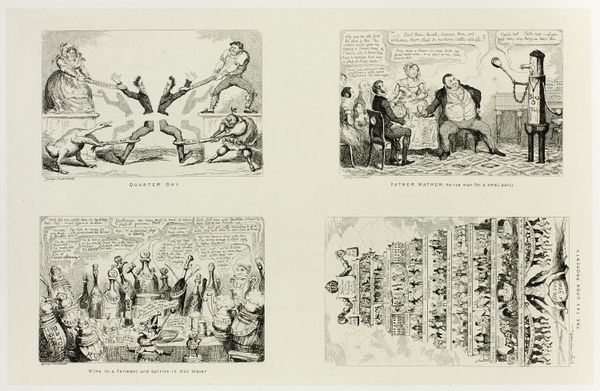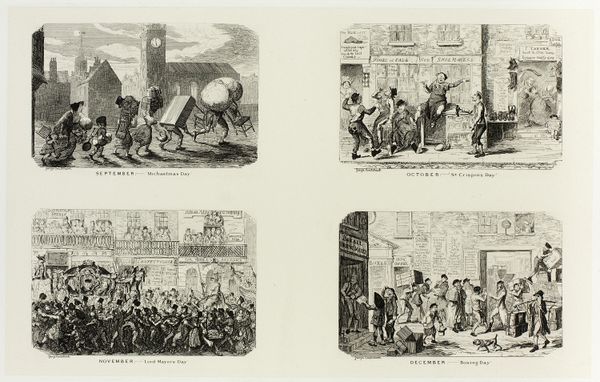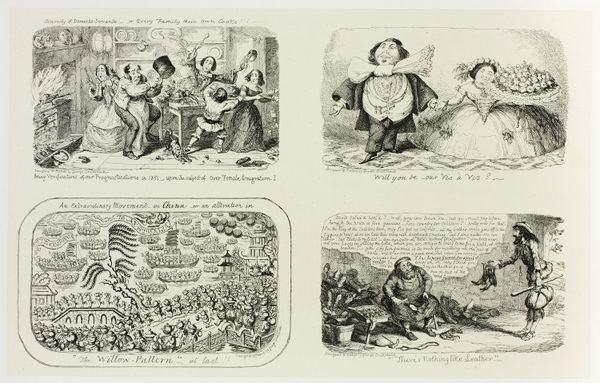
May - Settling for the Derby - Long Odds and Long Faces from George Cruikshank's Steel Etchings to The Comic Almanacks: 1835-1853 (top left) c. 1841 - 1880
0:00
0:00
Dimensions: 207 × 333 mm (primary support); 345 × 505 mm (secondary support)
Copyright: Public Domain
Editor: So, this is “May - Settling for the Derby - Long Odds and Long Faces,” one of George Cruikshank's steel etchings, likely from the mid-19th century. The scene is dominated by these elongated figures gathered around a table. It almost feels like a stage, very theatrical. What strikes you about the composition? Curator: The strength of Cruikshank's image resides in its exploitation of line. Observe how the etching technique allows for precise, almost surgical rendering of detail. The varying thicknesses and densities of the lines create form and depth, while the caricatured figures contribute to a dynamic, rhythmic composition. Editor: It definitely has movement. Is that a romanticism feature? Curator: While bearing aspects of Romanticism through its engagement with emotional expression and satirical observation, this image predominantly speaks through its formal elements. Notice, for example, how the artist uses distortion. How does it serve the composition? Editor: To push certain people or expressions forward and give the picture a lighthearted atmosphere? I suppose there are rules for this kind of freedom? Curator: Rules, perhaps, in the sense that compositional choices should serve the overall unity and visual impact of the work. Each element – the elongated limbs, the exaggerated facial features, even the stark contrast between light and shadow – contributes to the etching's internal logic. It’s not random; rather, a meticulously crafted arrangement. Editor: So, analyzing the form gives a solid foundation. It's great to look beyond what is literally being shown in the artwork. Curator: Indeed. By dissecting its visual anatomy, we begin to appreciate the strategic deployment of artistic tools and begin forming an analysis from a less emotional place. This is the key.
Comments
No comments
Be the first to comment and join the conversation on the ultimate creative platform.

